BSK
Well-Known Member
I've debated making this post as I don't want to sound like I'm knocking anyone or questioning their skills. But I've also never shied away from trying to educate, so here it is...
When someone posts a trail-cam picture of a buck on here and asks "Is this buck mature," I see a lot of comments about whether the buck has a swayed back and a saggy belly. I realize this field-judging advice has been given out by a lot of popular hunting shows and literature, but I question the value of that advice. I've looked at a lot of pictures of Tennessee deer (as in over 2 million). I've seen pictures of hundreds and hundreds of mature Tennessee bucks, many of which were later killed and their age confirmed. Yet it is extremely rare to see a Tennessee buck with a deeply swayed back or truly saggy belly. Mature Tennessee bucks just look "thick." If they have a swayed back and saggy belly, they are most likely extremely old.
Many good indicators of buck age (and maturity) exist, but in my opinion, the best indicator of maturity in Tennessee bucks is to look at the depth of the buck's chest in relation to the length of his front legs. At maturity (4 1/2), a buck's chest will be about as deep as his front legs are long. In essence, the two measurements will be about equal (top of the shoulder to the bottom of the brisket will look equal to the length of the front leg from the brisket to the ground).
Within 2-4 weeks of the rut kicking off, the second best indicator of maturity is the neck. Mature bucks develop truly massive necks near the rut. Their necks will bulk up so thick it can make their face look short, even giving their face a "blocky" look. of course, pre-rut (September into early October) and post-rut that neck size will be different.
All of the following pictured bucks are mature Tennessee bucks (from 4 1/2 to 6 1/2). I don't see much in the way of saggy bellies or swayed backs here. But I do see deep chests and thick necks (for those pictures taken near the rut).
When someone posts a trail-cam picture of a buck on here and asks "Is this buck mature," I see a lot of comments about whether the buck has a swayed back and a saggy belly. I realize this field-judging advice has been given out by a lot of popular hunting shows and literature, but I question the value of that advice. I've looked at a lot of pictures of Tennessee deer (as in over 2 million). I've seen pictures of hundreds and hundreds of mature Tennessee bucks, many of which were later killed and their age confirmed. Yet it is extremely rare to see a Tennessee buck with a deeply swayed back or truly saggy belly. Mature Tennessee bucks just look "thick." If they have a swayed back and saggy belly, they are most likely extremely old.
Many good indicators of buck age (and maturity) exist, but in my opinion, the best indicator of maturity in Tennessee bucks is to look at the depth of the buck's chest in relation to the length of his front legs. At maturity (4 1/2), a buck's chest will be about as deep as his front legs are long. In essence, the two measurements will be about equal (top of the shoulder to the bottom of the brisket will look equal to the length of the front leg from the brisket to the ground).
Within 2-4 weeks of the rut kicking off, the second best indicator of maturity is the neck. Mature bucks develop truly massive necks near the rut. Their necks will bulk up so thick it can make their face look short, even giving their face a "blocky" look. of course, pre-rut (September into early October) and post-rut that neck size will be different.
All of the following pictured bucks are mature Tennessee bucks (from 4 1/2 to 6 1/2). I don't see much in the way of saggy bellies or swayed backs here. But I do see deep chests and thick necks (for those pictures taken near the rut).
Attachments
-
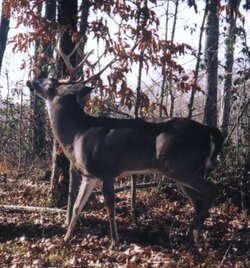 buck0309b.jpg62.8 KB · Views: 213
buck0309b.jpg62.8 KB · Views: 213 -
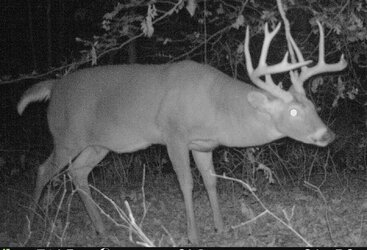 buck1817g.jpg330.2 KB · Views: 209
buck1817g.jpg330.2 KB · Views: 209 -
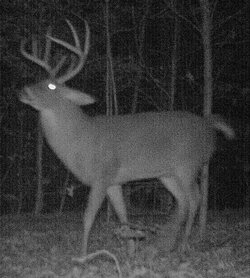 buck1534b.jpg210.1 KB · Views: 217
buck1534b.jpg210.1 KB · Views: 217 -
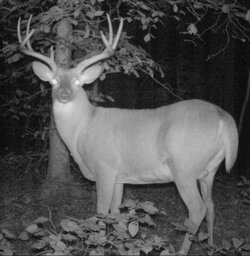 buck1709i.jpg456.7 KB · Views: 205
buck1709i.jpg456.7 KB · Views: 205 -
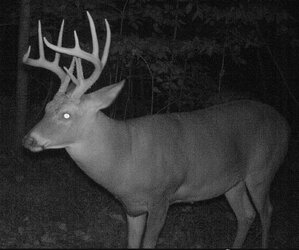 buck1510a.jpg391.3 KB · Views: 195
buck1510a.jpg391.3 KB · Views: 195 -
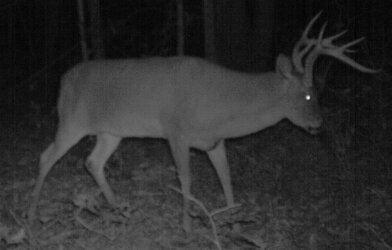 Buck1428d.jpg74.9 KB · Views: 199
Buck1428d.jpg74.9 KB · Views: 199 -
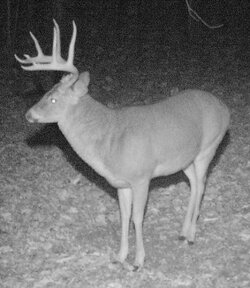 Buck1332a.jpg181.2 KB · Views: 197
Buck1332a.jpg181.2 KB · Views: 197 -
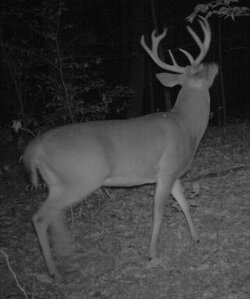 buck1123e.jpg136.4 KB · Views: 197
buck1123e.jpg136.4 KB · Views: 197 -
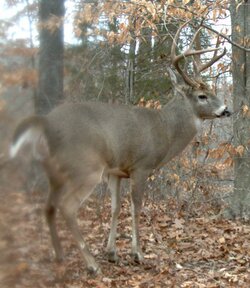 buck1029d.jpg123.8 KB · Views: 199
buck1029d.jpg123.8 KB · Views: 199 -
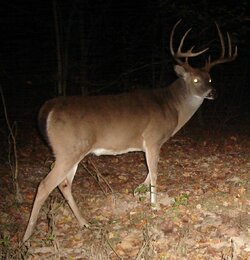 buck1004g.jpg167.2 KB · Views: 194
buck1004g.jpg167.2 KB · Views: 194 -
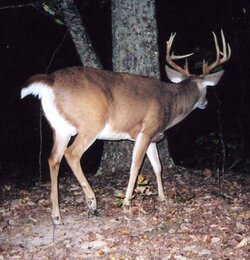 buck0531a.jpg53.5 KB · Views: 210
buck0531a.jpg53.5 KB · Views: 210











